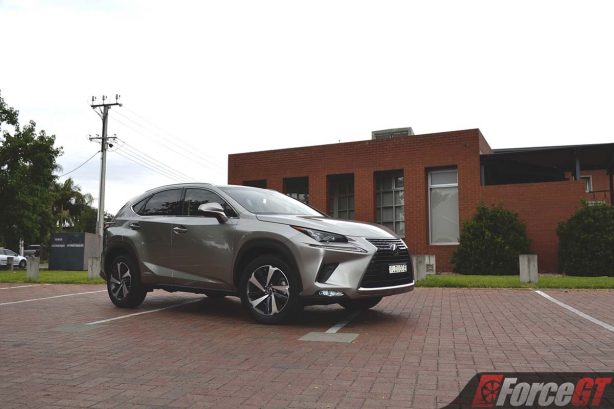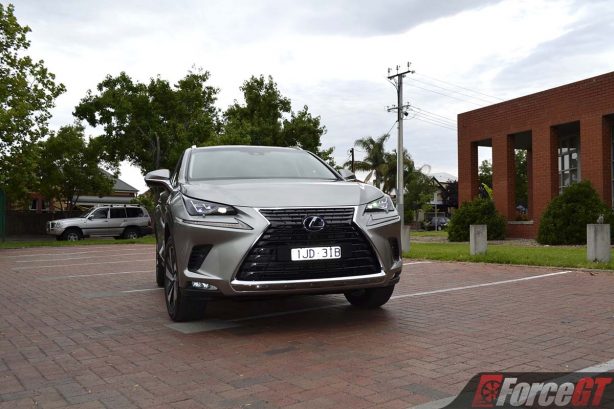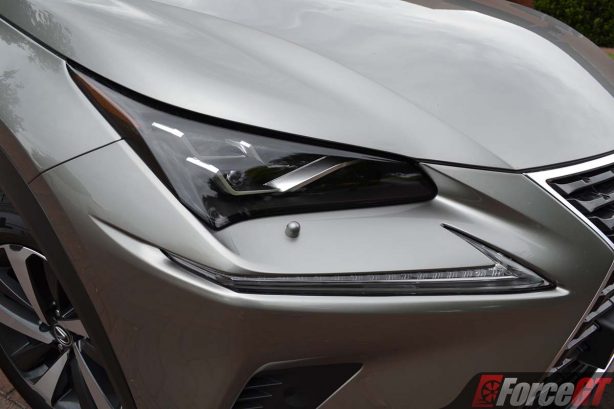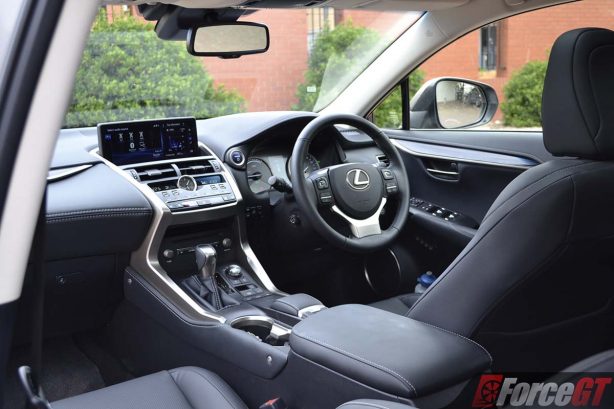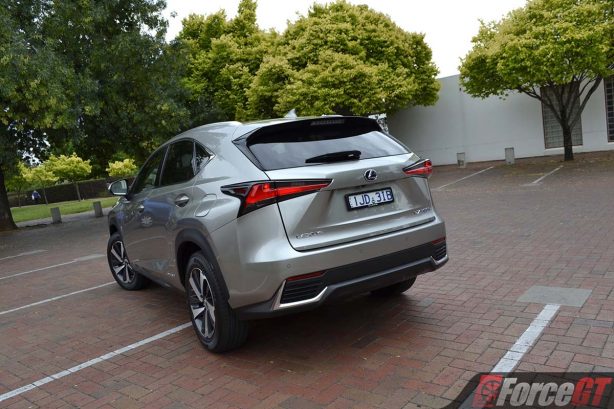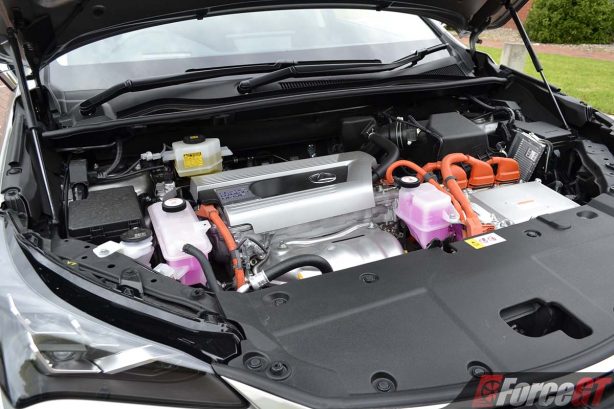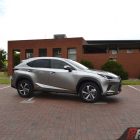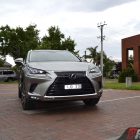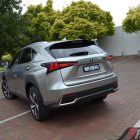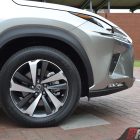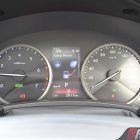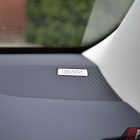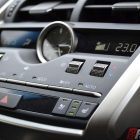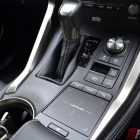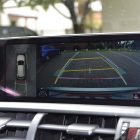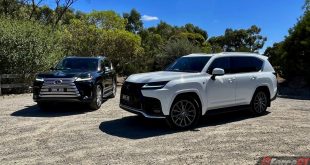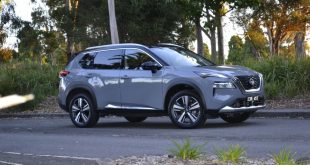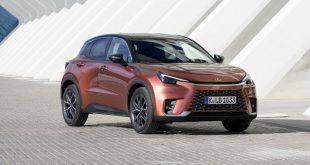The popular Lexus NX has received its first major update since its introduction in 2014. Introduced as Lexus’ answer to the Audi Q5, BMW X3 and Mercedes-Benz GLC, the NX has been a showroom success for the brand, accounting for nearly 1 out of every 3 Lexus sold in Australia. A lot is riding on its broad shoulders then.
Since its debut though, new-generation models of the Audi Q5, BMW X3 and Volvo XC60 have also hit the market, making life more challenging for the NX. An update is hence inevitable.
But Lexus knows not to mess with what brings buyers into its showrooms in the first place – the NX’s styling – and instead focused on the details that enhance its visual impact.
The signature spindle grille on the NX Luxury and Sports Luxury now has a powerful new 3D look with horizontal bars and layer blocks, while the F Sport features a pronounced mesh grille with new vertical interwoven pattern, aligning it to the RC F sports coupe.
There is also fresh new machined and dark metallic finished 18-inch alloy wheel design for the Sports Luxury (tested here) model, while at the back, all variants get new LED combination lamps.
Lexus has further enhanced the safety credentials on the NX, with Lexus Safety System +, Pre-collision Safety System with autonomous emergency braking and pedestrian detection, Lane Departure Warning+, Trailer Sway Control, auto high beam and Active Cruise Control with stop and go now standard on all variants.
Sports Luxury models also gain snazzy sequential turn signals and adaptive high beam that automatically adjusts light distribution by enabling or disabling 11 independent LED chips within each headlight to avoid dazzling others.
Inside, the new 10.3-inch high-resolution display is a welcome improvement, along with the more ergonomically efficient climate control panel with four easy-to-operate toggle switches and the addition of a digital speedometer in the Multi-Information Display.
The central analogue clock is now larger, with a clearer face and a more pronounced outer ring, making it easier to read. It also has GPS control to adjust for time zones when you drive across borders.
Our range-topping model also gets electric folding rear seats that fold the rear seat backrests to expand the boot from 475 litres to 1,520 litres – just 30 litres less compared to the new Audi Q5.
The magnificent 14-speaker premium Mark Levinson system in our Sports Lux now has Clari-Fi Compression Audio Restoration Technology to recreate sounds lost in compressed MP3 or streaming files in real time, such as the high and low-range sounds and natural voice.
Unfortunately, Lexus is persisting with its remote touch interface for the infotainment system. And while it is now larger and offers better support from the reshaped palm rest, it’s still tricky to operate on the move compared to rival systems. Happily, the wireless charging tray is now wider and longer to accommodate ever-larger smartphones and voice control finally works!
- READ MORE: Lexus NX full specification
While the cosmetic and specification enhancement are welcome, Lexus has made crucial changes to other areas that matters, including refining the NX’s suspension to further improve stability, body control and ride comfort.
There’s new calibration for the rear stabiliser bar and stabiliser-bar bushing and new front dampers with new oil seals, new fluid and reduced friction.
The Adaptive Variable Suspension (AVS) (standard on F Sport and Sports Luxury) has also been upgraded to the latest iteration with linear-solenoid actuators that provide 650 switching levels (up from 30 in the previous iteration) for continuously variable damping.
The result is an even more comfortable ride around town with improved refinement and an already excellent NVH (noise, vibration and harshness). The suspension does a fine job of smoothing out road imperfections, yet remaining lively on country roads.
While the NX was never truly an engaging drive with light controls that give you little feedback, the chassis improvement has contributed to greater responsiveness and reduced body roll for better driver enjoyment. It holds the road well, giving it confidence inspiring handling.
However, the car’s steering remains relatively numb which can knock your confidence somewhat when trying to position its nose accurately around the bends.
The 2018 Lexus NX carries over its power and drivetrain from the pre-facelift model. That means a 2.0-litre turbocharged four-cylinder petrol with 175kW and 350Nm of torque in the now rebadged NX 300, or a 2.5-litre naturally aspirated petrol hybrid putting out 147kW/221Nm in the NX 300h we tested here.
While the turbocharged engine matches with a conventional 6-speed automatic transmission, the hybrid uses a CVT automatic gearbox which makes the engine drone when you put your foot down without the expected surge in acceleration. The NX is therefore more at home when you’re gentle with the throttle, where it will glide around town in near-silent electric mode, as long as you are doing below approximately 30km/h.
Lexus says the NX 300h will return a combined fuel consumption of 5.7L/100km. Our weeklong test sees the trip computer reading hovering at 7.7L/100km with about 70 per cent urban driving.
Like most hybrids, the NX’s brake pedal feels wooden, making it hard to modulate the brakes smoothly.
Verdict
Design and Comfort: 8.0/10
Performance and Handling: 6.5/10
Quality: 8.5/10
Economy: 7.0/10
Features and Equipment: 8.0/10
Lexus has done a great job refining what is essentially an aging chassis, bringing an even higher level of refinement and responsiveness to the facelifted NX.
The improved safety equipment and updated styling ensures the NX remains competitive and sharp against its newer rivals, while Lexus’ second to none built quality and reliability bring peace of mind.
2018 Lexus NX 300h pricing and specification
| Price (Excluding on-road costs): | From: $57,300 As tested: NX 300h Sports Luxury AWD: $77,300* *tested option: · Premium paint: $1,000 |
| Warranty: | 4 years/100,000km |
| Warranty Customer Assistance: | 4 years Roadside Assist |
| Country of Origin: | Japan |
| Service Intervals: | 12 months/15,000km |
| Engine: | 2.5-litre Atkinson cycle in-line 4-cylinder petrol + electric motors: 147kW, 221Nm |
| Transmission: | Electronically controlled Continuously Variable Transmission (E-CVT) |
| Drivetrain: | E-Four active all-wheel drive with a 50kW electric rear drive motor |
| 0-100km/h (seconds): | Claimed: 9.2 |
| Combined Fuel Consumption (L/100km): | Claimed: 5.7/Tested: 7.7 |
| RON Rating: | 91 |
| Fuel Capacity (L): | 56 |
| Body: | 5-door SUV, 5-seats |
| Safety: | · 5-star ANCAP · 8 airbags · Vehicle Stability Control · Traction Control · EBD · ABS · Brake Assist · Hill-start Assist Control · Lexus Safety System + · Pre-Collision Safety System with Pedestrian Detection · Lane Departure Warning with Steering Assist · Blind-Spot Monitor with Rear Cross-Traffic Alert · Multi-LED headlamps · Adaptive Automatic High Beam · Sequential Turn Signals · All-speed Active Cruise Control · Trailer Sway Control · Adaptive Variable Suspension · Front and Rear Parking Sensors · Wide view reverse camera · Tyre Pressure Warning System · ISOFIX |
| Dimensions (L/W/H/W-B) mm: | 4,640/1,870/1,645/2,660 |
| Boot Space (min/max) (L): | 475/1,520 |
| Turning Circle Between Kerbs: | 11.4 |
| Kerb Weight (kg): | 1,895 |
| Approach/Departure: | 17.2/23.7 |
| Towing Capacity (kg): | Braked: 1,000/Unbraked: 750 |
| Entertainment: | · 10.3-inch colour display · 14-speaker Mark Levinson audio with MP3 and audio streaming · Lexus Remote Touch Controller · Satellite Navigation · USB · Bluetooth |
Competitors: Audi Q5, BMW X3, Jaguar F-PACE, Mercedes-Benz GLC, Range Rover Evoque, Volvo XC60
 ForceGT.com Car News, Car Reviews, Video Reviews, Tuning and much more.
ForceGT.com Car News, Car Reviews, Video Reviews, Tuning and much more. 